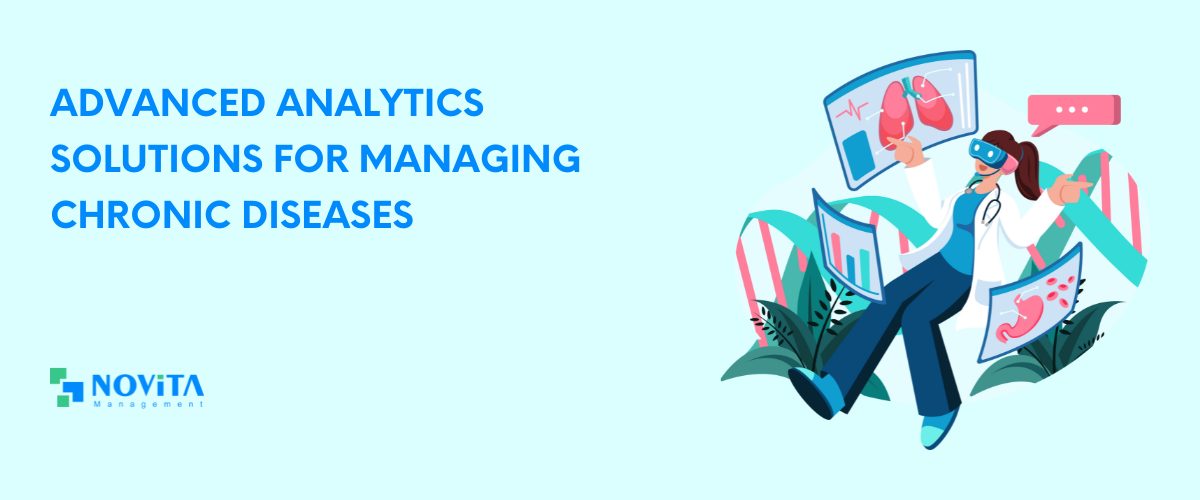
Managing chronic diseases such as heart disease, diabetes, cancer, and hypertension is a significant challenge for the U.S. healthcare system, affecting 129 million Americans and placing immense pressure on resources. Healthcare organizations are increasingly adopting strategies like disease management programs, coordinated care, patient education, and preventive initiatives to improve outcomes and reduce costs.
The rise of electronic health records (EHRs) has transformed data collection and utilization, providing centralized repositories for individual and population-level insights. These systems empower healthcare providers to coordinate care, monitor outcomes, and target at-risk groups effectively. The Agency for Healthcare Research and Quality emphasizes the importance of health IT tools in streamlining care delivery, facilitating provider collaboration, and enhancing patient education.
However, the complexity of managing chronic diseases requires healthcare systems to carefully select and integrate the right analytics tools. Below, we highlight five transformative technologies that are driving innovation in chronic disease management and helping stakeholders deliver more effective and equitable care.
1. Population Health Management (PHM) Technologies
Chronic diseases impact both individuals and entire populations, and their burden varies across health systems, requiring tailored solutions. PHM technologies consolidate data from diverse sources, such as EHRs, disease registries, claims data, and social determinants of health (SDOH), into centralized repositories. These tools enable healthcare organizations to:
- • Identify patient populations and assess their care needs.
- • Streamline care delivery and reduce health disparities.
- • Enhance patient engagement through self-management apps and digital health literacy.
PHM tools play a critical role in transforming raw data into actionable insights for managing chronic conditions.
2. Predictive Analytics
Predictive analytics enables healthcare providers to anticipate disease trends and implement proactive care strategies. These tools help:
- • Track disease prevalence and comorbidities.
- • Identify at-risk patients for preventive interventions.
- • Develop personalized treatment plans and improve resource allocation.
Often powered by artificial intelligence (AI), predictive models enhance early detection, precision medicine, and operational efficiency. They also integrate seamlessly with risk stratification efforts to forecast disease progression and inform care strategies.
3. Risk Stratification
Risk stratification categorizes patients based on health status, behavioral patterns, and social factors to prioritize care delivery. For chronic disease management, these tools:
- • Generate insights into patient population needs.
- • Enable targeted care coordination for high-risk groups.
- • Address SDOH challenges to promote health equity.
By combining risk stratification with predictive analytics, healthcare organizations can identify high-risk patients and develop interventions that improve outcomes while optimizing resource use.
4. Wearables and Remote Patient Monitoring (RPM)
Wearables and RPM technologies, such as blood glucose monitors, pulse oximeters, and smartwatches, provide real-time data for chronic condition management. These tools:
- • Allow continuous monitoring and personalized care adjustments.
- • Improve care delivery for conditions like diabetes and hypertension.
- • Reduce care gaps and enhance outcomes for underserved populations.
RPM programs are scalable, making them an essential component of chronic disease management strategies.
5. Data Visualization and Dashboards
Data visualization simplifies complex datasets into user-friendly visuals like charts, maps, and dashboards. Dashboards, in particular, are invaluable for:
- • Centralizing insights from EHRs and other data sources.
- • Highlighting trends in chronic disease prevalence and care gaps.
- • Supporting evidence-based decisions through interactive tools like the CDC’s Chronic Disease Indicators (CDI) and the Indiana Sickle Cell Dashboard.
Dashboards bridge the gap between data and actionable insights, empowering stakeholders to address health inequities and improve care coordination.
These five analytics technologies—Population Health Management, Predictive Analytics, Risk Stratification, Remote Patient Monitoring, and Data Visualization with Dashboards—provide a robust foundation for managing chronic diseases. By leveraging these tools, healthcare organizations can enhance preventive care, address disparities, and improve health outcomes for individuals and populations alike.
